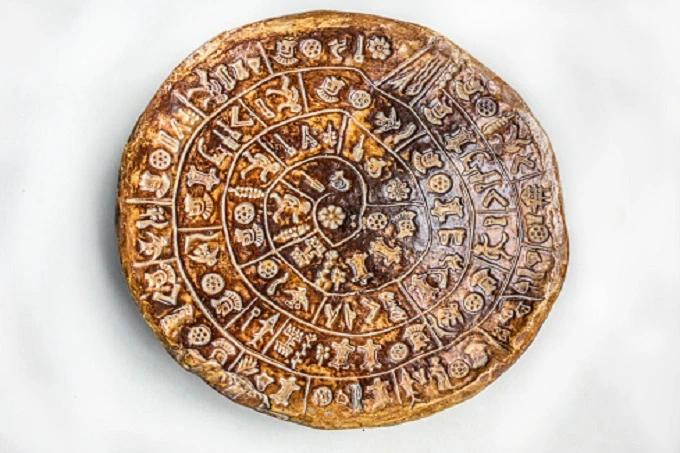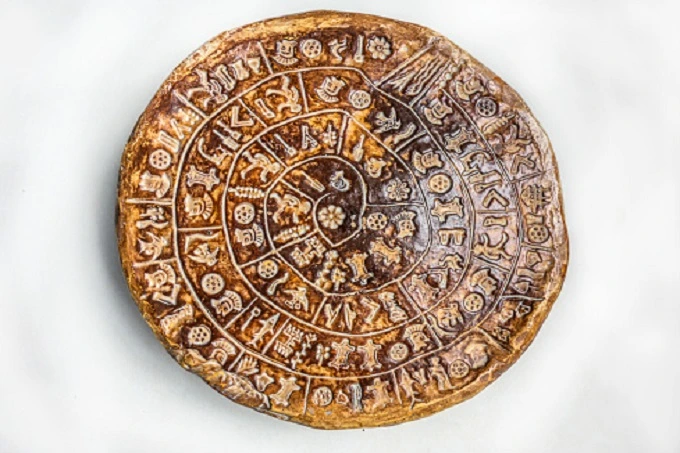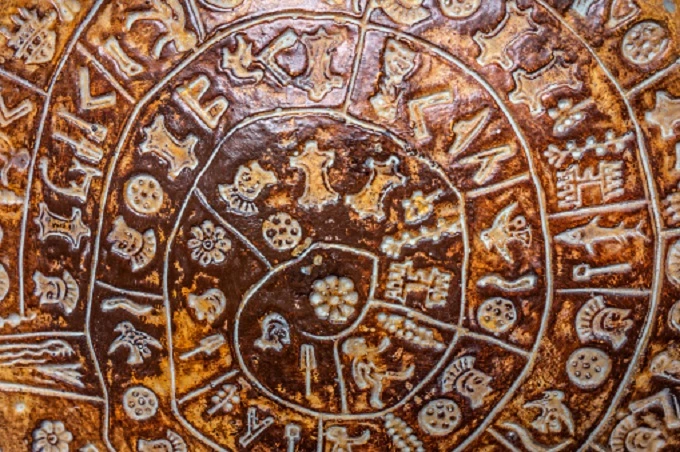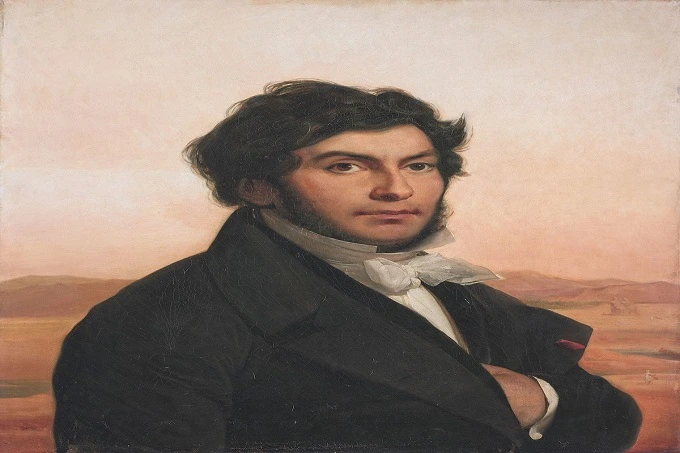Has the secret of the Phaistos Disc been revealed?

One of history’s most mysterious and interesting artifacts was discovered during the excavations of the city of Festus in Crete more than a century ago. The Phaistos Disc is a spherical clay tablet with mysterious and unusual markings on both sides.
This discovery has become one of the fascinating monuments of ancient Mediterranean history and culture. The artifact became the world’s earliest known surviving printed text. It was engraved on clay with miniature dies three thousand years before Johannes Gutenberg developed the printing machine. Incomprehensible writings continue to interest historians, linguists, and antiquities experts. What kind of text is being encrypted?
Minoan civilization

Crete was the origin of the Minoan civilization. In the 2nd millennium BC, this ancient civilization was strong and advanced. It brought in the age of antiquity and the future great Greek civilization. As a result, the Minoans were usually navigators. These people have been known for their highly developed civilization from ancient times. Crete has a complex religious system and a long history of culture and trade. The Minoan fleet was mighty, and its ships travelled to all corners of the earth.
Local artisans developed not just commonplace items but also genuine works of art. Ceramics were known for their incredibly skilled and stunningly beautiful paintings. Jewellery dazzled with its skill and refinement of design. The architecture is still stunning today, and the walls of stately palaces are adorned with lovely, intricate murals.
The great pre-Greek civilization was unearthed only at the beginning of the 20th century. Even though the whole ancient Greek epic, mythology, and everything were filled with tales about Crete’s amazing riches and power, legends about Crete’s incredible wealth and power persisted. In his Iliad, Homer describes King Minos, who reigned at Knossos many decades before the epic Trojan War began. He was a monarch with great authority. Minos ordered the Athenians to pay homage to him by sending beautiful women to be sacrificed to the Minotaur, a monster with a bull’s head. With the assistance of the king’s daughter Ariadne, who fell in love with the young man, the mythological hero Theseus defeated the monster.
Scholars doubt that this epic story is based on anything other than Homer’s imagination. The discovery of the remains of Troy, which were likewise thought to be the result of the ancient Greek poet’s fancies, settled everything. This prompted researchers to dig further to find the legendary Knossos. And he was discovered! The civilization was given the name Minoan in honour of the fabled king.
Mysterious Artifact

Another palace, Phaistos, was unearthed on the island of Crete. It was there that an extraordinarily unusual and mysterious artifact known as the Phaistos disc was discovered, named after the palace. This is a spherical clay tablet that is around 15 centimetres in diameter. In a spiral, cryptic writings are put on both sides. These mysterious characters are printed on the disc rather than carved! This archaeological discovery has sparked praise and fierce discussion in scholarly circles for more than a century. The problem is that no one can solve the text’s puzzle.
Who hasn’t given it a shot? For decades, leading historians and linguists have laboured with these writings but have come nothing near to understanding them. There are several theories as well. Some think a hymn in praise of a supreme god is printed there. Others believe the historical record is inscribed there. Some say that the disc serves as a guide to Crete’s holy sites. The symbols on the disc don’t correspond to any recognized writing system. Scientists have even attempted to interpret these signs based on their appearance. Nothing seemed to work.
The Phaistos disc has a total of 242 characters printed on it. Each one is made up of many dozens of distinct characters. Some of them are simple to comprehend. They depict common items, such as a boat, a bow, a shield, and a helmet. All signs are organized in a spiral, with vertical lines separating them into groups. There are two to seven characters in each group. Scientists believe they are either individual syllables or whole words.

All of the symbols were pressed into soft clay using hieroglyphic seals. The tablet was then burned in a kiln. Some signs are scrapped and replaced with others. Unfortunately, no seals were discovered during the Phaistos Palace excavations. The disc also has dashes and dots in addition to hieroglyphs. Experts think they are hand-drawn and serve as markers in the text to separate words, suffixes, and prefixes, or as punctuation marks.
Linguists identified 25 distinct signals. This seems to be a syllabic alphabet rather than an alphabet. The Mycenaeans created a writing system that no one else had ever seen before. To this day, scientists have failed in their efforts to decode it. After a century, no additional works written in this style have been discovered. As a result, historians are unsure whether this writing was invented locally or introduced to Crete.
Phaistos disc

According to German linguists, the Phaistos Disc is an early example of moveable type printing. Other specialists in the area agree with his viewpoint. Historians think that this artifact foreshadowed humanity’s future advances in the field of printing. This was done on paper with ink rather than clay tablets. Only more than two thousand years later, in medieval Europe, such technologies arrived for the first time. Why did this ingenious technology not spread across the ancient Mediterranean remains a mystery?
The origins of the characters printed on the disc have not been determined by scientists. Despite this, a number of facts support the idea of the Cretan origin of writing that is employed on the Phaistos disc. This is further supported by the origin of the clay used to make the disc. Furthermore, the symbols, or their prototypes, are inspired by local realities. Archaeologists unearthed a copper axe of the same age as the Phaistos disc in one of Crete’s caves. The object has some type of inscription on it. These were disc characters intermingled with the linear writing that was common in Crete at the period. In other words, the writing on the Phaistos disc is written in Minoan, not Greek.

The Phaistos Disc is the clearest evidence of ancient technical advancement, although it was never distributed in its time for unknown reasons. The mystery surrounding the artifact’s writings is unlikely to be solved. Only a discovery as significant as the Rosetta stone can assist. There, the principle of bilingualism was used. Francois Champollion was able to decipher hitherto undiscovered Egyptian hieroglyphs as a result of this. Perhaps a similar method was used when printing the text on the Phaistos disc.




